If you’re brand new to the wonderful world of home loans, you might be a bit overwhelmed by how many different types of financing options are really out there. Both primary loan types (fixed-rate and adjustable-rate) have many variations, so how do you know which one is best for you?
Let’s start with Fixed-Rate Mortgages. The most popular loan in today’s marketplace is the 30-year fixed. This is a loan paid over the course of 30 years, with a fixed interest rate, meaning you’ll pay the same interest rate in year one as you will in year 30 of your mortgage. Your payment may change due to insurance or taxes, but generally a 30-year loan is seen as a practical option due to its stability, simplicity, and month-to-month affordability.
So, what’s the attraction of the 15-year-fixed? A 15-year loan will have slightly lower interest rates compared to a similarly priced 30-year loan, but since the term is so much shorter, you’ll pay much less in interest over the life of the loan. The tradeoff is that the monthly payments will be much higher because the term isn’t stretched out over 30 years. If a buyer’s goal is to save as much as possible over the long term, and they can afford the steeper monthly payment, a 15-year is a good choice.
If you’re interested in a 15-year term but the high monthly payments make you wary, consider a 20-year or a 25-year term. These two choices provide a “middle of the road” option when it comes to balancing monthly payment and long-term savings.
The other primary loan type is the Adjustable Rate Mortgage (ARM). With an ARM, your interest rate will change annually (or sometimes semi-annually) based on the market rates and your loan agreement.
Today, most ARM loans for property buyers are really Hybrid ARMs. These types of ARM loans feature a fixed initial period where the interest rate is locked, with rates adjusting on a regular basis after that. For example, a 5/1 ARM has an initial fixed rate period of 5 years, with the rate adjusting annually (the “1” in 5/1) after that. 3/1, 7/1, and 10/1 are other common hybrid ARMs.
With an ARM, the interest rate during the initial period will be much lower than that of fixed rate loans. The downside is that after the initial period, the rate will adjust based on the index the loan is tied to and most often this means an increased payment over time. ARMs can be a really good choice for a handful of prospective borrowers:
Borrowers who are confident in future earnings: If you’ve recently graduated from medical school (congrats!) or you’re the beneficiary of a trust that’s not paying out yet (also, congrats), a hybrid loan will allow you to qualify for a larger loan despite your current financial status, as you’ll be able to afford the rising rates later on.
“Here for a good-time not for a long-time” homeowners: If you’re confident you’ll be in the home for a very short period of time (say, less than 5 or 10 years), you can enjoy a super-affordable interest rate and sell the home before the end of the initial fixed rate period.
You plan to pay off the loan fast: Let’s say you’re downsizing to a smaller home but haven’t received funds from the sale of your previous home. An ARM will allow you to enjoy a low payment until your cash is disbursed, at which time you can pay off your ARM before the end of the initial fixed-rate period.



